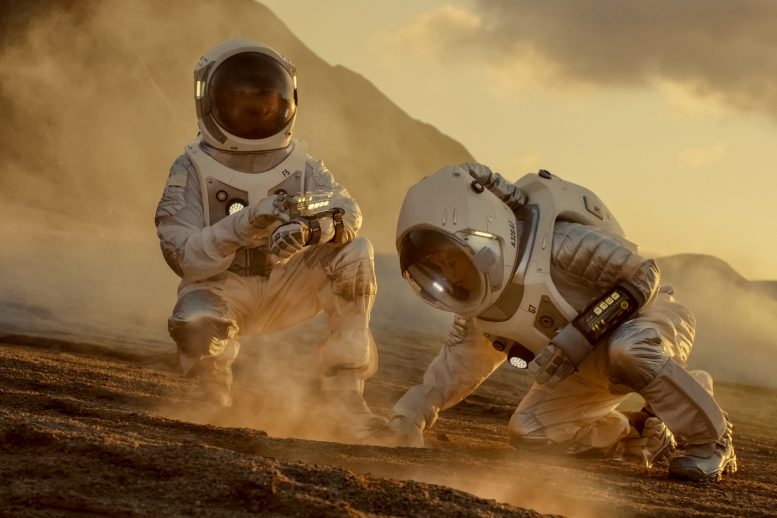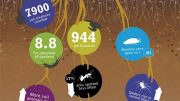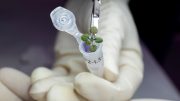Mars soil simulant comparable to soil on Earth
Researchers at Wageningen University & Research in the Netherlands have produced crops in Mars and Moon soil simulant developed by NASA. The research supports the idea that it would not only be possible to grow food on Mars and the Moon to feed future settlers, but also to obtain viable seeds from crops grown there.
Wieger Wamelink and his colleagues at Wageningen University & Research, cultivated ten different crops: garden cress, rocket, tomato, radish, rye, quinoa, spinach, chives, peas, and leek. The researchers simulated the properties of Lunar and Martian regolith and “normal” soil (potting soil from Earth) as a control.
Nine of the ten crops sown grew well and edible parts were harvested from them. Spinach was the exception. Total biomass production per tray was the highest for the Earth control and Mars soil simulant that differed significantly from Moon soil simulant. The seeds produced by three species (radish, rye, and garden cress) were tested successfully for germination.
The article, “Crop growth and viability of seeds on Mars and Moon soil simulants,” by Wieger Wamelink and colleagues has been published in De Gruyter’s open-access journal, Open Agriculture.
“We were thrilled when we saw the first tomatoes ever grown on Mars soil simulant turning red. It meant that the next step towards a sustainable closed agricultural ecosystem had been taken,” said Wieger Wamelink.
Reference: “Crop growth and viability of seeds on Mars and Moon soil simulants” by G.W.W. Wamelink, J.Y. Frissel, W.H.J. Krijnen and M.R. Verwoert, 2 October 2019, Open Agriculture.
DOI: 10.1515/opag-2019-0051










Be the first to comment on "Win for Space Colonization: Soil on Moon and Mars Likely to Support Crops"